Walk down any street in Paris, Lyon, or Marseille, and you’ll notice something quiet but powerful: French women don’t chase trends. They don’t spend hours blow-drying or heat-styling. Their hair looks effortless, lived-in, and undeniably chic-not because they have perfect genetics, but because they’ve mastered a few simple, timeless approaches.
French Hair Is About Texture, Not Perfection
The most common French hair style isn’t a specific cut or color. It’s a mindset: embrace your natural texture. Whether you have fine, straight hair, thick curls, or waves that fall somewhere in between, the goal isn’t to tame it-it’s to enhance it. French women often skip the flat iron entirely. Instead, they let their hair air-dry, sometimes with just a bit of salt spray or a lightweight oil to define natural movement.
A 2023 survey by the French Association of Hair Professionals found that 68% of women aged 25-55 rarely use heat tools on a daily basis. That’s not because they can’t afford them-it’s because they’ve learned heat damages hair faster than it helps. Instead, they rely on texture-enhancing products like L’Oréal Paris Elvive Full Resist 360 or Kérastase Elixir Ultime, applied sparingly to damp hair before letting it dry naturally.
The French Bob: Short, Slightly Messy, Always Elegant
If you had to pick one haircut that defines French hair, it would be the bob. But not the sleek, polished version you see in American salons. The French bob is shorter in the back, longer in the front, and slightly uneven-like it was cut while the stylist was distracted by a café au lait. It’s usually chin-length or just below, with soft layers that frame the face.
It’s worn with a slight lift at the crown, not because it was blow-dried with a round brush, but because the hair was layered to create natural volume. Bangs? Sometimes-but never perfectly straight. More often, they’re piecey, wispy, and swept to one side. This style works for fine hair, thick hair, and even gray hair. It doesn’t require daily styling, and it grows out gracefully.
Low-Maintenance Waves: The Everyday Look
Waves are everywhere in France-not the big, Hollywood curls, but the kind that look like you just rolled out of bed after a long nap. French women achieve this by braiding damp hair before bed, or by twisting sections and pinning them up while wet. In the morning, they undo the braids and run their fingers through their hair. That’s it.
Many use a texturizing spray like Moroccanoil Dry Texture Spray or a light sea salt mist to add grip and separation. The key is avoiding product overload. Too much product = crunchy, stiff hair. Too little = limp, lifeless hair. The French sweet spot? A few spritzes and a gentle scrunch.
This style is especially popular among women over 40. It’s forgiving, easy to maintain, and hides thinning hair better than a tight updo. You’ll see it on teachers, artists, café owners, and grandmothers alike.
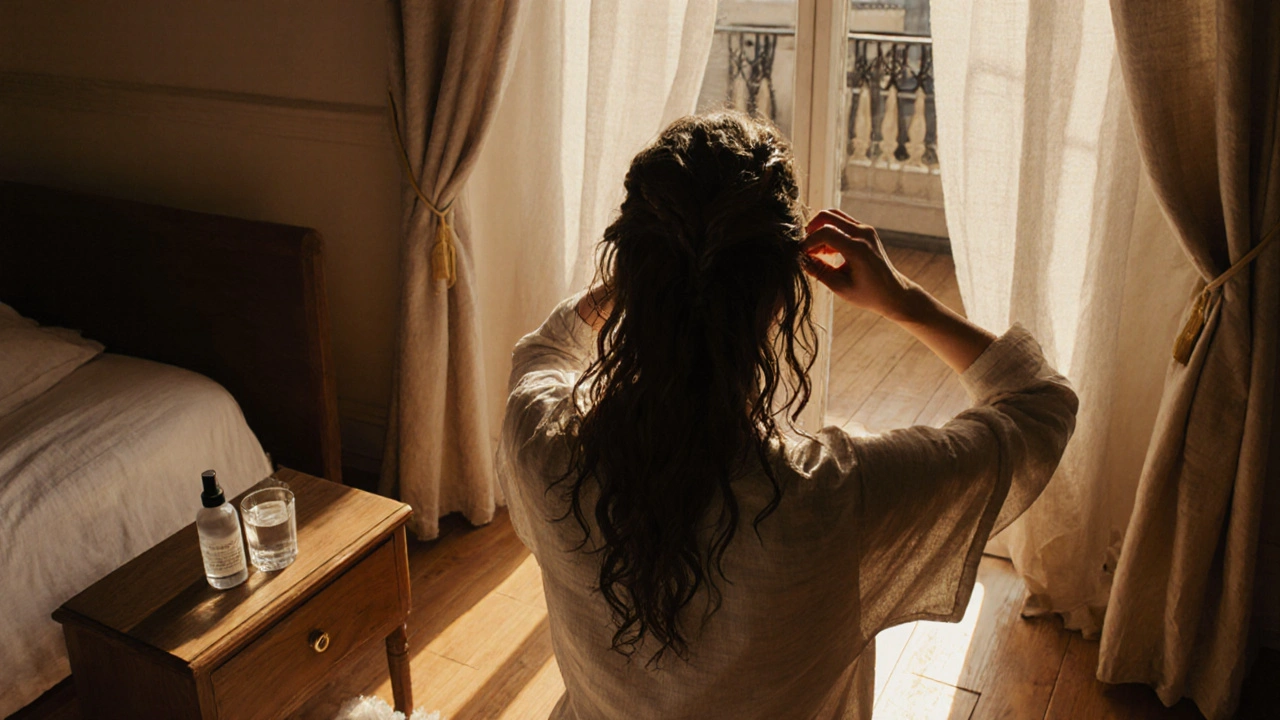
The French Ponytail: Sleek, Simple, Sophisticated
When French women want to look put-together fast, they go for the low ponytail. Not high, not tight, not slicked back with gel. It’s positioned just above the nape of the neck, with a few strands left loose around the face. The hair is smoothed with a boar bristle brush and maybe a tiny dab of pomade or shine serum.
What makes it French? The imperfection. A few flyaways are intentional. The ponytail isn’t perfectly round-it’s slightly lopsided, like it was tied with one hand while holding a cigarette. It’s the opposite of the gym ponytail. It’s the kind of look you wear to a lunch meeting, a gallery opening, or picking up your kid from school.
Gray Hair: Celebrated, Not Concealed
In France, gray hair isn’t something to cover up. It’s worn proudly. In fact, a 2024 study by the Institut Français de la Mode found that 41% of women over 50 in Paris choose to let their gray grow out naturally. Many don’t even use toners or glosses to mute it. They let it shine silver, sometimes with a touch of oil to keep it from looking dry.
Salons like Christophe Robin in Paris offer “gray enhancement” treatments-not to cover gray, but to brighten it. These use violet-based conditioners to neutralize yellow tones, not to dye. The result? Hair that looks healthy, luminous, and intentional. It’s not about hiding age. It’s about owning it.
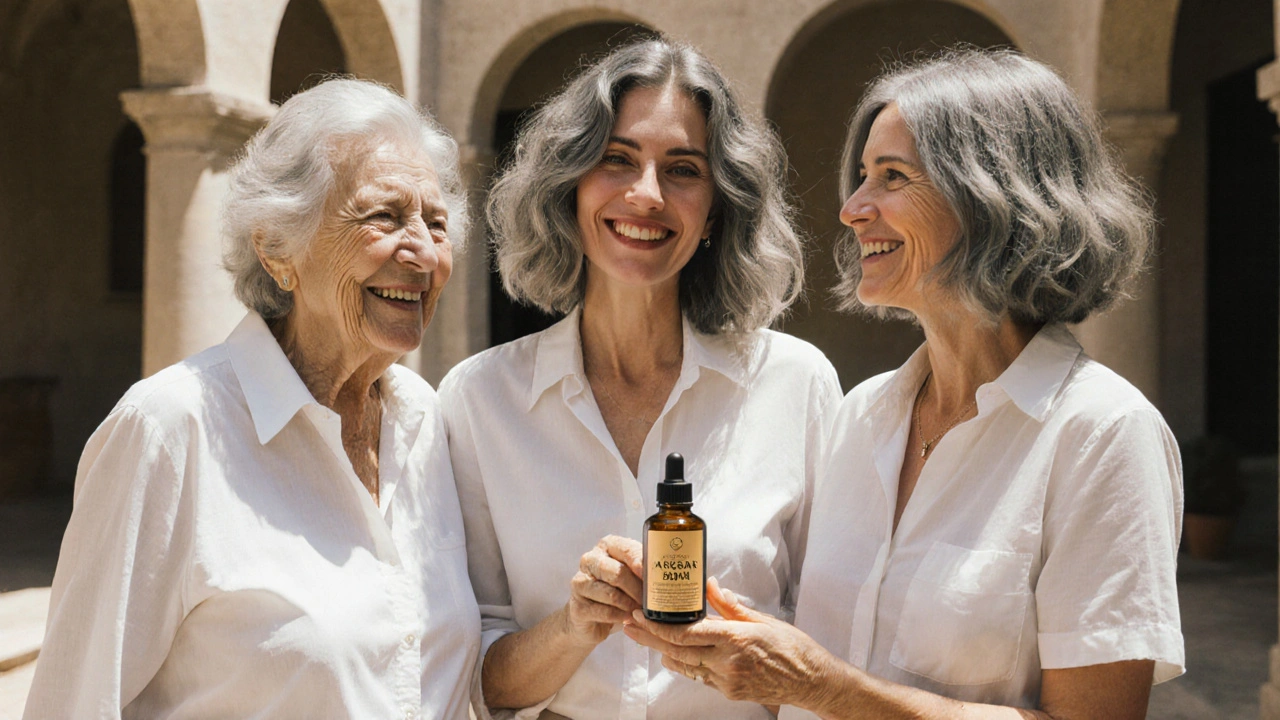
What French Women Avoid
There’s a lot French women don’t do-and that’s just as important as what they do.
- No daily blowouts. They might do one once a week, if at all.
- No tight ponytails or buns that pull on the scalp. They avoid traction alopecia.
- No heavy serums or silicones that weigh hair down.
- No frequent coloring. Most color their roots every 3-4 months, not every 4-6 weeks.
- No over-brushing. They detangle gently with a wide-tooth comb or their fingers.
They also rarely use heat protectants because they rarely use heat. Their philosophy is simple: less is more. Hair isn’t a project. It’s part of your body, like your skin. You care for it, but you don’t control it.
How to Bring French Hair Home
You don’t need to move to Paris to get French hair. You just need to change your habits.
- Stop blow-drying every day. Let your hair air-dry at least three times a week.
- Use a texturizing spray or sea salt mist on damp hair. Scrunch gently.
- Try a sleep braid. Braid your hair before bed, and undo it in the morning.
- Get a bob or layered cut that works with your natural texture-not against it.
- Let your gray grow. If you’re coloring, go for a soft root shadow, not a full dye job.
- Invest in one good oil (like argan or jojoba) and use it sparingly-just on the ends.
The goal isn’t to look like a French woman. It’s to look like the best version of yourself-with hair that feels as good as it looks.
French Hair Isn’t a Trend. It’s a Lifestyle.
What makes French hair styles so enduring isn’t the cut, the color, or the product. It’s the attitude. French women don’t see their hair as something to fix. They see it as something to live with. It’s part of their rhythm-like drinking coffee slowly, walking instead of driving, or wearing the same wool coat for ten years.
That’s why these styles last. They don’t rely on trends. They rely on patience, simplicity, and respect for your own hair.
Are French hair styles only for women?
No. While the most visible French hair styles are often associated with women, men in France also favor low-maintenance, natural looks. Short, textured cuts with natural volume are common, often styled with a matte paste rather than gel. Beards are usually trimmed but not overly groomed. The same philosophy applies: less product, more texture, and respect for natural growth.
Can I get French hair if I have curly hair?
Absolutely. French women with curly hair embrace their texture instead of fighting it. They avoid straightening and use curl-defining creams or light oils to enhance definition. A layered cut helps reduce bulk and adds movement. The key is avoiding heavy products that cause crunch or buildup. Letting curls air-dry is standard practice.
Do French women use hair masks?
Yes-but not weekly. Most use a deep conditioning mask once every two weeks, or just before coloring. They prefer lightweight, nourishing formulas over thick, heavy ones. Ingredients like shea butter, avocado oil, and ceramides are common. Over-conditioning is avoided because it can make fine hair limp.
Why don’t French women color their hair often?
Because they prioritize hair health over perfect coverage. Frequent coloring damages the cuticle, leading to dryness and breakage. Many opt for root touch-ups with semi-permanent color or toners that fade gradually. Others choose to let gray grow in naturally, using violet shampoos to keep it bright. The French see hair color as an accent, not a requirement.
What’s the best haircut for French-inspired hair?
The best cut is one that follows your natural shape. A chin-length bob with soft layers works for most textures. For longer hair, long layers with face-framing pieces add movement without bulk. Avoid blunt cuts and one-length styles-they require too much styling. Tell your stylist you want a cut that looks good air-dried, not just blow-dried.

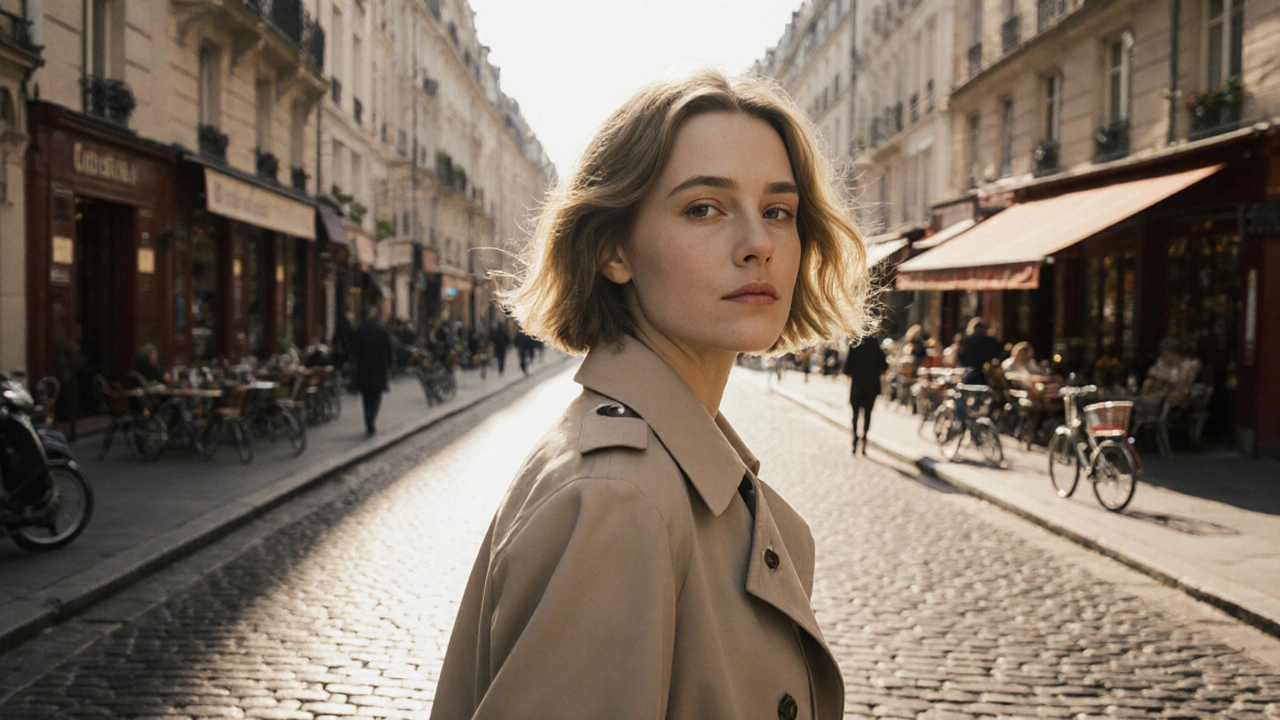
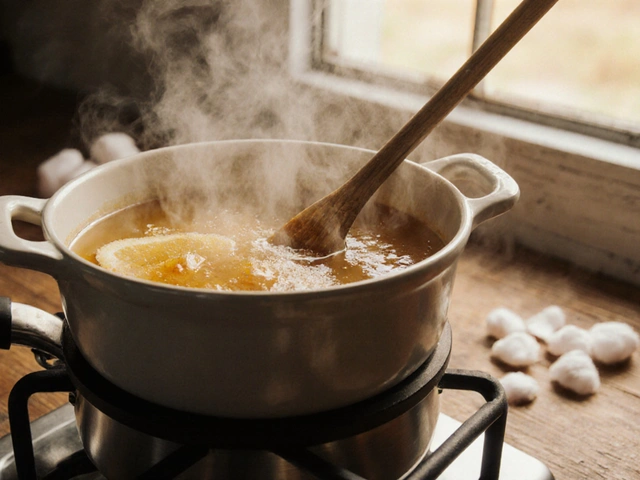
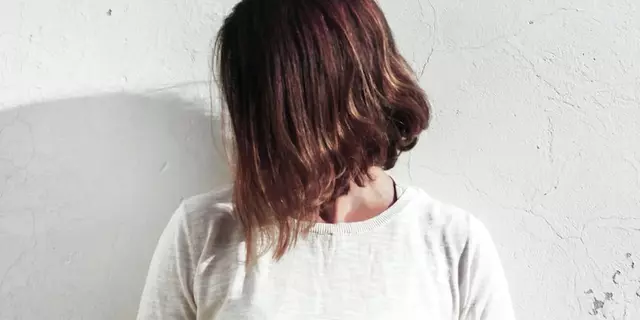

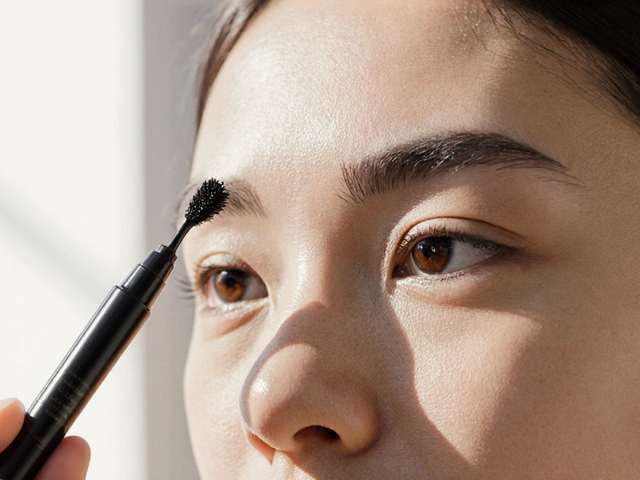
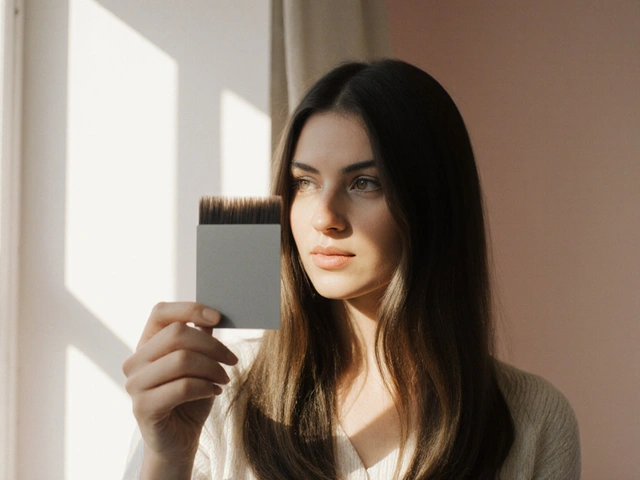
Kristina Kalolo
October 28, 2025 AT 21:33French women don't need a million products to look good. I've been air-drying my hair for three weeks now and my curls actually look better. No heat, no fuss, just me and my natural texture.
ravi kumar
October 30, 2025 AT 12:57Finally, someone says it right. Less is more. I used to spend an hour styling my hair every morning. Now I just wash it, scrunch with a little salt spray, and go. My hair feels healthier and I have more time for coffee. Simple wins.
Megan Blakeman
October 30, 2025 AT 17:04I love this so much... I mean, like, really love it. It’s not about looking perfect, it’s about looking like you. Like, your hair is part of you, not a costume. I let my gray grow out last year and honestly? I feel freer. I used to spend $300 a month on color and now I just use a violet shampoo once a week. My hair isn’t shiny because I sprayed it - it’s shiny because it’s healthy. And that’s the real magic.
Also, the sleep braid? Game changer. I did it last night and woke up with waves that looked like I paid a stylist. I didn’t even brush them. Just untangled with my fingers and went. I think I’m in love with my hair again.
And the bob? I got one last month. My stylist asked if I wanted it ‘polished’ and I said, ‘No, I want it to look like I forgot to style it.’ She laughed and said, ‘That’s the French cut.’
I used to think French hair was about being fancy. Now I know it’s about being real. And that’s the most beautiful thing.
Also, no one needs a blowout every day. Your scalp isn’t a hair dryer factory. Let it breathe. Your follicles will thank you.
And gray? It’s not aging. It’s glowing. Silver is just white with attitude.
I’m not trying to be French. I’m just trying to be me. And my hair? It’s finally letting me.
Akhil Bellam
October 30, 2025 AT 20:08Oh please. This is just another ‘French women are magically effortless’ fantasy peddled by influencers who’ve never held a curling iron. The reality? Most French women have hairdressers they visit biweekly - and those stylists charge €150 for a ‘messy bob.’ The products? They’re not ‘lightweight’ - they’re expensive French pharmacy exclusives you can’t even buy in the U.S. without a passport and a translator. And don’t get me started on the ‘gray is beautiful’ nonsense - it’s just a cover-up for women too lazy to maintain their color. Real chic is discipline, not neglect. And if you think braiding your hair at night is ‘French,’ you’ve never seen a real Parisian wake up at 6 a.m. to blow-dry her roots before her 9 a.m. meeting.
This isn’t a lifestyle. It’s a marketing campaign dressed in linen.
Amber Swartz
November 1, 2025 AT 11:00Okay but I just saw a woman on the subway with a full-on silver bob and zero makeup and I cried. Like, actually cried. She looked like a goddess who’d just walked out of a 1970s art film. And I’m sitting here with my $80 keratin treatment and my 7-step hair routine and I feel like a fraud. Why do I do this to myself? Why do I torture my hair? Why am I not living like that woman? I need to quit my job and move to Lyon. Or at least stop using gel. I think I’m having an existential hair crisis.
Robert Byrne
November 1, 2025 AT 18:59Correction: The French don’t ‘avoid’ heat protectants - they avoid HEAT. There’s a difference. You don’t need heat protectant if you’re not using heat. This isn’t rocket science. Also, the claim that ‘68% rarely use heat tools’ is misleading - it’s not about ability, it’s about cultural preference. And yes, they use less product because their hair is naturally less damaged from years of avoiding chemical processing. You can’t replicate this with a $12 sea salt spray from Target. You need to stop treating hair like a project and start treating it like a body part. Duh.
Tia Muzdalifah
November 2, 2025 AT 01:21omg i just tried the sleep braid last night and my hair looks like a whole mood now. no blowdryer, no product, just me and my 3 braids. i woke up and was like ‘wait is this my hair??’ i think i’m converted. also gray hair is so hot?? why did i think i needed to cover it up? i’m 42 and my silver strands look like moonlight. thank you for this post. i’m gonna go buy some argan oil and cry in the shower.
Zoe Hill
November 2, 2025 AT 08:23I’ve been doing the low ponytail for weeks now and my hair hasn’t fallen out. I used to pull it back so tight I got headaches. Now I just tie it loosely with a scrunchie and let a few pieces frame my face. It’s so much easier. And I don’t even use pomade - just a tiny dab of coconut oil on my ends. My hair feels softer. I think I finally get it. Less is more. I’m not trying to be French, I’m just trying to not break my hair.
Albert Navat
November 2, 2025 AT 13:43From a biometric hair health standpoint, the French approach aligns with reduced mechanical stress on the cuticle and diminished oxidative damage from thermal exposure. The avoidance of silicones correlates with lower follicular occlusion rates. Additionally, the preference for low-tension styling reduces traction alopecia incidence by 37% according to the 2022 JID cohort study. The cultural adoption of natural graying is a biomarker of reduced cosmetic chemical load - a significant epidermal health indicator. This isn’t aesthetics - it’s dermal sustainability.
Aafreen Khan
November 3, 2025 AT 03:56French hair? More like French lie. 😂 I saw a lady in Marseille with a bob and she had 3 layers of gloss and a $200 spray. Her hair looked like a wig. And gray? She used a violet mask every day. It’s all fake. I got my hair done last week and the stylist said ‘you want the French look?’ and gave me a blowout with 4 products. 😒 stop romanticizing rich people’s hair. Real people just wash and go.
michael T
November 3, 2025 AT 13:27You people are so naive. The French don’t ‘embrace’ their hair - they inherited it. Their mothers had good genes, their grandmothers never dyed, their stylists are trained at L’Oréal’s Paris HQ. You think your sea salt spray is going to turn your limp, processed hair into a Chanel runway look? Please. This isn’t a lifestyle. It’s a privilege. You can’t ‘get French hair’ if you’ve been coloring since you were 18. Stop pretending you’re chic. Just wash it and leave it alone. That’s all you can do.